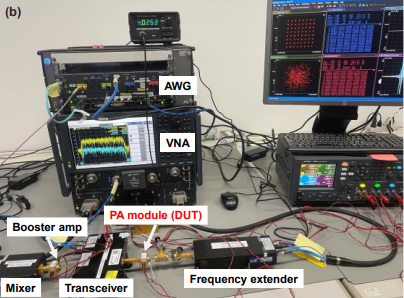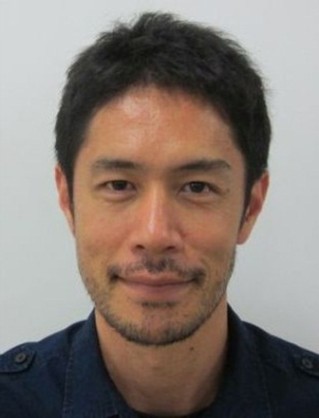Sub-THz power amplifier testing achieves 280 Gbps speeds
Test company Keysight Technologies, NTT and its NTT Innovative Devices subsidiary achieved a speed record in the sub-Terahertz (sub-THz) spectrum range with a new power amplifier, laying additional groundwork for future 6G system components.
The testing confirmed that an NTT wide-bandwidth J-band Indium Phosphide (InP)-based power amplifier was able to achieve a 280 Gbps data rate (35 GBaud, 256 QAM) at 0 dBm power output. This is the highest data rate reported to date in the 300 GHz band, according to Keysight.

The sub-THz range is generally considered to be the spectrum range from 100-300 GHz, part of which is the J-Band (220-325 GHz). NTT said that its wideband amplifier module fully covers the J-band.
As standardization work for 6G systems starts to get underway, sub-THz frequencies are being explored in 6G for ultra-high-speed applications with extremely wide bandwidths. Those applications include Joint Communications and Sensing (JCAS), to enable functions like gesture recognition, high-resolution radar imaging, holographic communications or IoT-based healthcare monitoring.
However, there are significant challenges in working at such high frequencies. As NTT explained in a release, “Amplifying signals in the J-band is technically demanding, and as the signal speed and power increase, the adverse effects of signal distortion become more significant. These challenges have made it difficult for conventional signal generation systems to achieve both high output power and high modulation speed simultaneously.”
NTT noted that NTT Innovative Devices is already commercializing the amplifier module used in the testing.
“By utilizing our InP technology and collaborating with several partners, we have achieved a remarkable maximum throughput of 280 Gbps,” said Akimasa Kaneko, EVP of the Photonic Components Business Group at NTT Innovative Devices. “This accomplishment marks a significant milestone in developing the broadest frequency bandwidth amplifier, enhancing energy efficiency and linearity, and addressing industry challenges.”
NTT formed NTT Innovative Devices in 2023 order to focus on developing, designing and manufacture photonic-electronic convergence (PEC) devices to support NTT’s goal of using optics technologies to build optical and wireless networks with high speeds and capacity, and low latency and power consumption.
“These developments are pushing the boundaries of what can be achieved in wireless communication systems. The test and measurement industry is crucial in meeting the complex characterization needs of our devices. We have collaborated closely with Keysight throughout our design and verification stages,” said Hirokazu Takenouchi, VP and head of NTT Device Technology Laboratories.

While 5G moved cellular systems into millimeter-wave frequencies, as-yet-unstandardized 6G systems of the future are expected to push into even higher spectrum in the sub-THz range. In general, sub-THz frequencies have even more free-space path loss than mmWave systems, which means that link budgets are more sensitive to antenna gain and alignment, explained Sam Kusano, master application engineer/scientist at Keysight Technologies, in an email to RCR Wireless News.
NTT said that the distortion compensation technology developed by Keysight was particularly important to having a signal generation system that “successfully [combined] wide bandwidth with high linearity.”
A key issue with the sub-THz testing conducted with NTT and NTT Innovative DEvices, Kusano said, was maintaining output-power flatness across bandwidth greater than 10 gigahertz. This was addressed by using a VNA-calibrated receiver for real-time feedback and applying digital predistortion, he added.
“Demonstrating linearization of a high-power sub-THz PA over wide bandwidth shows that both high power and high linearity are simultaneously achievable, a necessary milestone toward practical sub-THz transceivers,” Kusano explained.
The results of the testing were presented at last week’s IMS conference in California. Read more details from NTT here.

![setup[59] sub-THz power amplifier test set up Keysight NTT](https://www.rcrwireless.com/wp-content/uploads/2025/06/setup59-696x620.jpg)